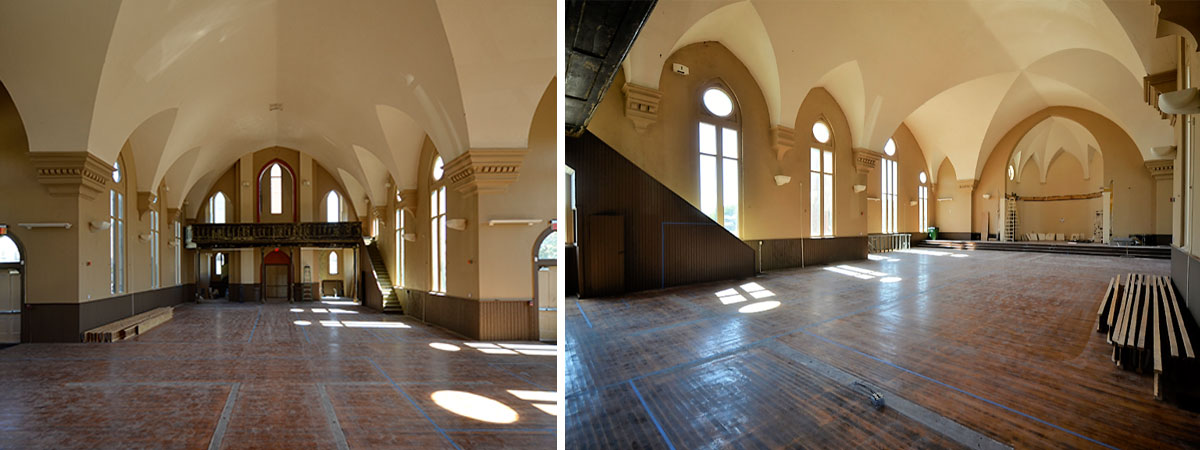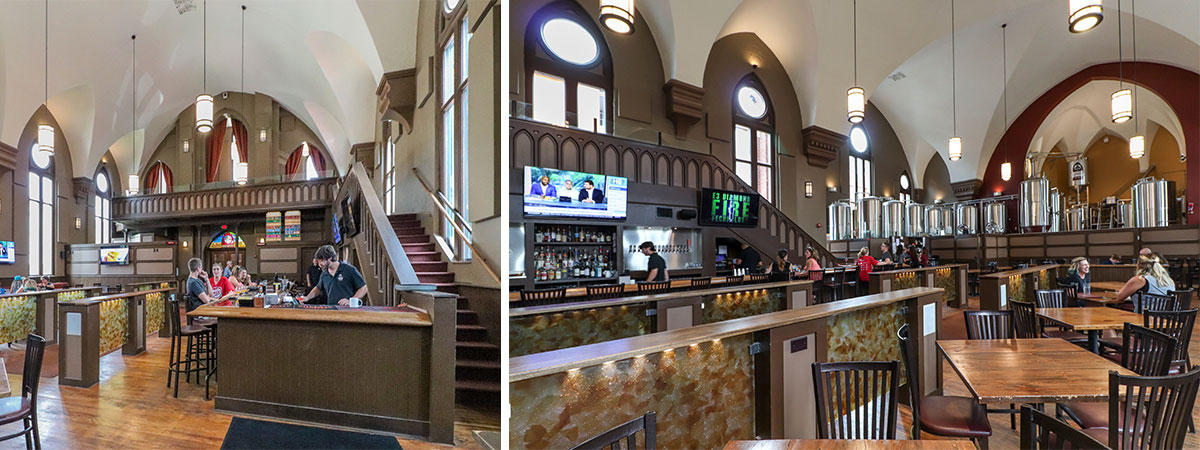Top 6 Things to Know when Considering Adaptive Reuse
-
Category
Studio-Workplace, Studio-Lifestyle, Studio-Higher Ed, Studio-Community, Perspectives, Innovation -
Posted By
Schmidt Associates -
Posted On
Feb 26, 2019
We have all heard the real estate mantra “Location, location, location!” However, great location does not also lead to perfect buildings. In fact, oftentimes the least perfect building is situated right on the site you want. And while some may consider a total demolition and rebuild as the only option, there are oftentimes a lot of arguments for adaptive reuse. Buildings that have been neglected, abandoned, or modified over the years are all great candidates for this type of project. Through adaptive reuse, older historic buildings can be restored – bringing back their charm and unique characteristics through careful planning and strategic design.

St. Joseph Brewery & Public House – Prior to Renovation


St. Joseph Brewery & Public House – After
If you’re considering adaptive reuse for your next project, here are the top six things you need to know:
- Land Availability. When land in the area you want is hard to come by, adaptive reuse is a great option. Rather than contributing to urban sprawl, or moving to a less than desirable location, revitalizing a building in need allows you to conserve space. This type of project is one of the best ways to keep our cities and towns walkable and vibrant.
- Environmental Conservation. While the easy solution often appears to be building from scratch, the truth is this type of thinking can cause a lot of complications down the road, including added cost. Remember in elementary school when they taught us “reduce, reuse and recycle”? The first step in reducing our environmental footprint is to reduce our use of materials. Adaptive reuse is a choice to care for the buildings that have already been built and to help us get out of the mindset of constantly consuming. If there’s one thing we will never get more of, it’s land.
- Historic Consideration. One of the beauties of working with historic buildings is that you constantly discover hidden treasures. From unique features to hard-to-come-by materials, many historic buildings are proof we really “don’t build ‘em like we used to.” Adaptive reuse not only allows us to preserve a part of history, but it also allows projects to take advantage of these ‘trademarks’ of historic buildings, showcasing them now and into the future. In some cases, adaptive reuse is the only option, especially when you are dealing with buildings that are preserved and protected by organizations, such as historical societies.
- Reimagining Function. Although adaptive reuse strives to preserve many of the architectural features of buildings, there is a great deal of reimagining that can take place throughout the project. Buildings built for a certain prior use do not need to continue that use to be successful. Old chapels can become inns, water towers can be converted into apartments, and industrial buildings transformed to residential homes. When the location is right, and you mix in a little creativity – anything is possible.
- Future Accommodation. Needs are constantly changing, which is something adaptive reuse understands. Just because older buildings – even ones only a few decades old – may no longer meet the standards or desires of today’s businesses and property owners, doesn’t mean they should be written off. Adaptive reuse allows for change, while still being mindful of what already exists. Adaptive reuse protects the future, ensuring resources, including land, aren’t wasted or taken for granted.
- Intelligent Reconciliation. When done well, adaptive reuse is the bridge that connects past to present, history to future. Adaptive reuse projects can bring the best of modern-day technologies and innovations to beautiful, historic buildings in prime locations. This type of holistic approach ensures existing buildings and materials are honored without sacrificing today’s needs and styles. Intelligent reconciliation also happens when architectural firms work on behalf of clients to communicate plans with the community, getting the proper permissions and permits to move forward with the project.
Adaptive reuse isn’t always the best solution, but more and more often we believe it’s an option that should be seriously considered. A smart way to conserve materials, protect the environment, and preserve the past, adaptive reuse can be the solution you’re looking for, especially when you’re sold on a building’s location or charm.




